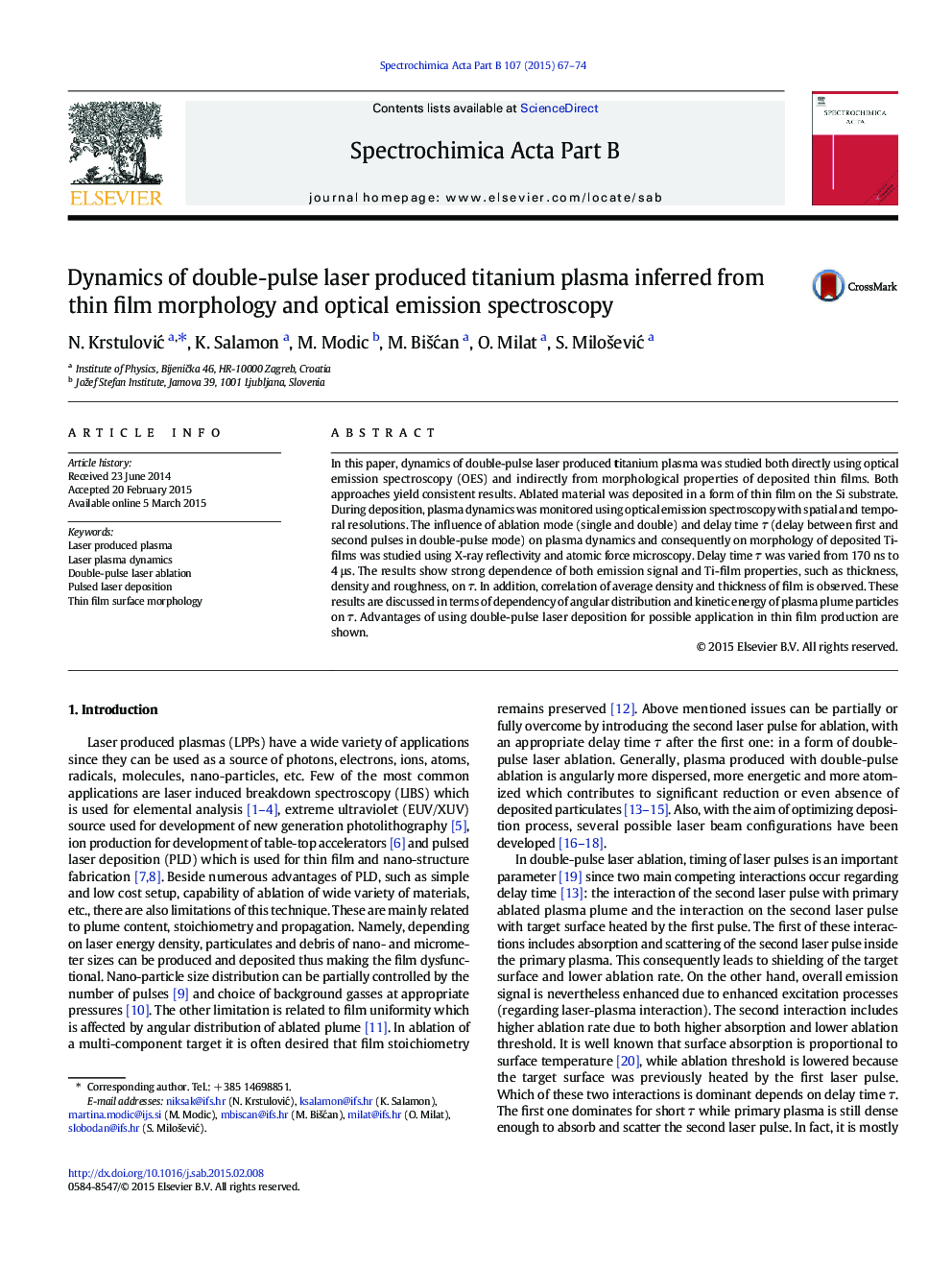| Article ID | Journal | Published Year | Pages | File Type |
|---|---|---|---|---|
| 1239623 | Spectrochimica Acta Part B: Atomic Spectroscopy | 2015 | 8 Pages |
•Ti-thin films produced by single and double pulse laser ablation mode.•Ablation mode and delay time influenced plasma plume and film characteristics.•Films are most compact for optimized delay time (thinnest, smoothest and most dense).•Plasma dynamics can be inferred from film characteristics.
In this paper, dynamics of double-pulse laser produced titanium plasma was studied both directly using optical emission spectroscopy (OES) and indirectly from morphological properties of deposited thin films. Both approaches yield consistent results. Ablated material was deposited in a form of thin film on the Si substrate. During deposition, plasma dynamics was monitored using optical emission spectroscopy with spatial and temporal resolutions. The influence of ablation mode (single and double) and delay time τ (delay between first and second pulses in double-pulse mode) on plasma dynamics and consequently on morphology of deposited Ti-films was studied using X-ray reflectivity and atomic force microscopy. Delay time τ was varied from 170 ns to 4 μs. The results show strong dependence of both emission signal and Ti-film properties, such as thickness, density and roughness, on τ. In addition, correlation of average density and thickness of film is observed. These results are discussed in terms of dependency of angular distribution and kinetic energy of plasma plume particles on τ. Advantages of using double-pulse laser deposition for possible application in thin film production are shown.
